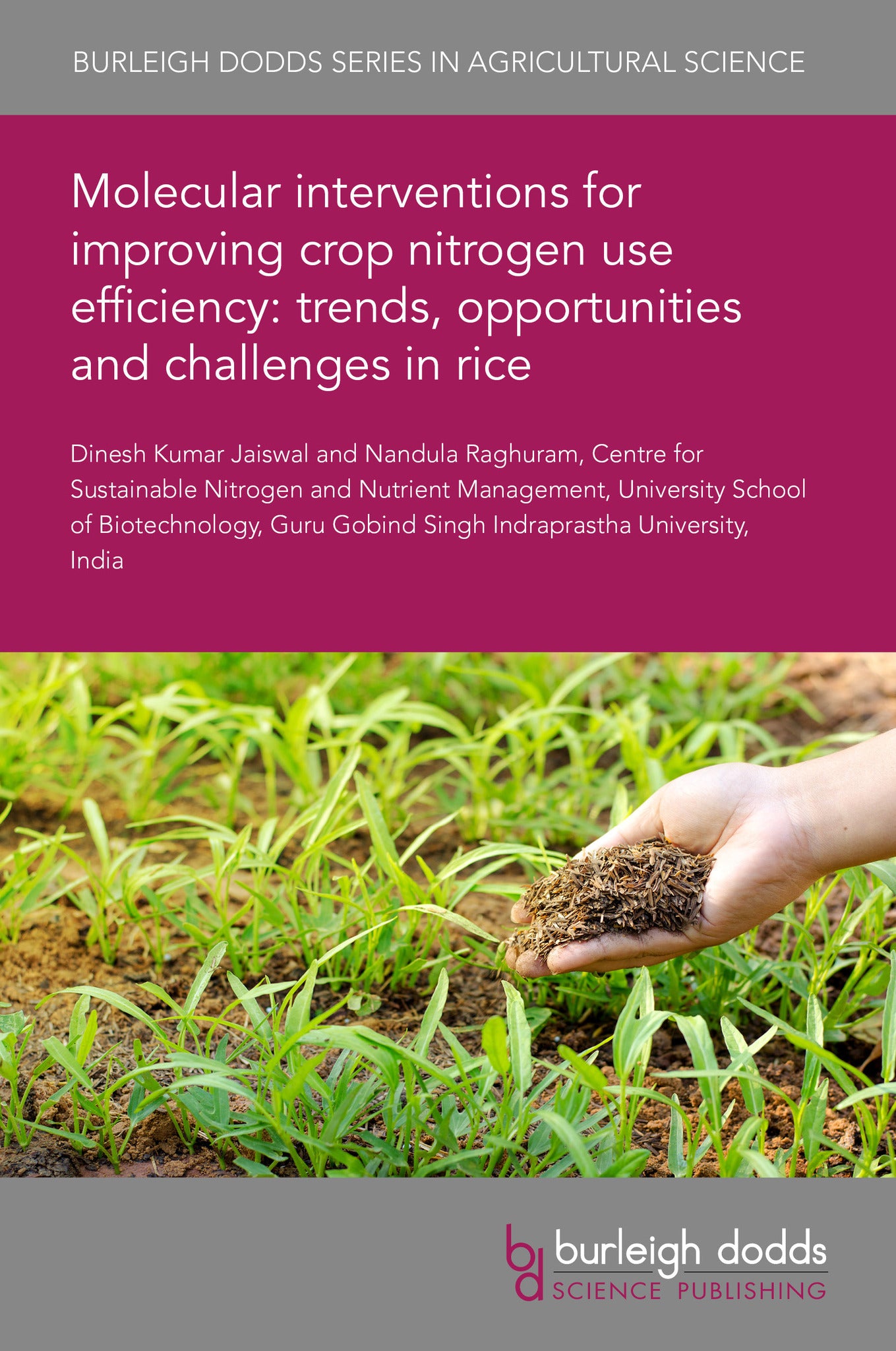We're sorry. An error has occurred
Please cancel or retry.
Molecular interventions for improving crop nitrogen use efficiency: trends, opportunities and challenges in rice

Some error occured while loading the Quick View. Please close the Quick View and try reloading the page.
Couldn't load pickup availability
- Format:
-
14 March 2024

Crop improvement for nitrogen (N) use efficiency (NUE) has been complicated by too many definitions for NUE, different forms of N inputs and different harvested outputs, apart from the large number of genes and processes involved. The recent characterization of the NUE phenotype in rice and the availability of N-responsive transcriptomic and proteomic datasets have enabled systematic identification and shortlisting of genetic and epigenetic targets for crop improvement. Transgenic validation of several candidate genes is in progress, including by genome editing. Further, genome-wide association studies (GWAS), identification of quantitative trait loci (QTL) and development of NUE associated markers are in progress, spanning N-uptake, -assimilation, -local and -systemic translocation, -remobilization as well as associated regulatory networks. This chapter summarizes and critically evaluates the progress made so far on these aspects and highlights the opportunities and challenges for the improvement of NUE in rice.

TECHNOLOGY & ENGINEERING / Agriculture / Sustainable Agriculture, Agronomy and crop production, TECHNOLOGY & ENGINEERING / Agriculture / Agronomy / Crop Science, SCIENCE / Environmental Science, TECHNOLOGY & ENGINEERING / Agriculture / Agronomy / Soil Science, Sustainability, Sustainable agriculture, Soil science and management

- 1 Introduction
- 2 Definition and selection of nitrogen use efficiency indices
- 3 Nitrogen management practices for improved nitrogen use efficiency
- 4 Biological intervention for nitrogen use efficiency improvement
- 5 Conclusion and future prospects
- 6 Where to look for further information
- 7 Acknowledgements
- 8 References



